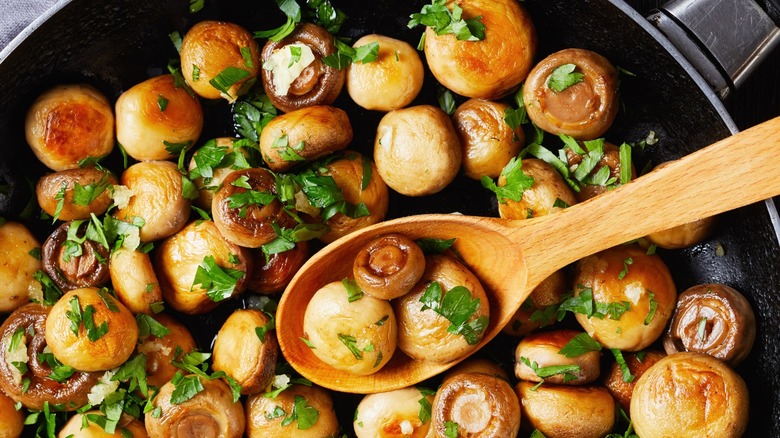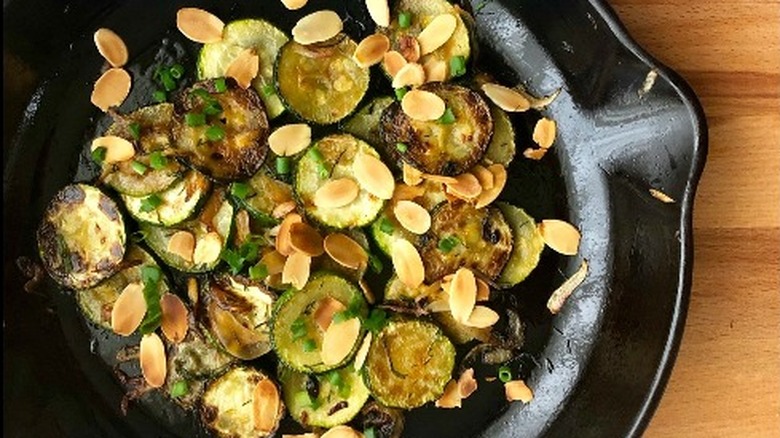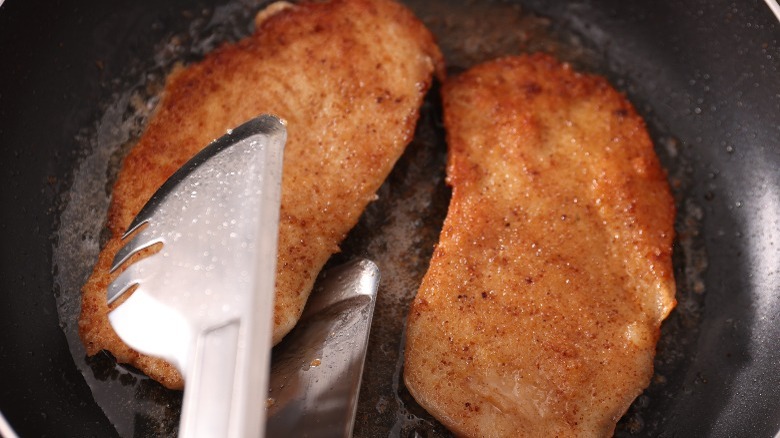Is Pan-Frying The Same Thing As Sautéing?
You're preparing dinner for yourself and your partner when they express delight that you're pan-frying it just like their dad did. You explain that you're sautéing it, and the battle lines are drawn. But before any name-calling starts, you calmly head to the internet, and now you're here.
To answer your question, pan-frying and sautéing are actually entirely different. Pan-frying uses up to an inch of the same types of oil you'd use for deep-frying, depending on the recipe, and (usually) lower heat to achieve a crisp, golden-brown result. Sautéing takes much less oil and typically relies on medium to high heat, meaning you need oil with a high smoke point. The result is caramelized, but it isn't crisp. Sautéing is a way to preserve an ingredient's natural charm — i.e., its color and flavor.
Understanding how and when to leverage each one makes cooking easier and less frustrating. Basically, you pan-fry when you want a result similar to deep-frying and sauté when you want to cook something through, like softening onions or making some quick green beans for dinner.
Pan-frying vs. sautéing
You need more oil for pan-frying because that cooking method transfers heat directly to the food (conduction) rather than waiting for it to transfer indirectly from the heat source on the bottom (convection). Direct heat yields a browner, crisper exterior similar in both result and method to deep-frying while using a lower heat ensures the food has plenty of time to cook.
Sautéing relies more on indirect heat transfer. The small amount of oil holds heat less efficiently and transfers it only to the surfaces of food directly touching the pan. Higher heat allows the surfaces of food to caramelize quickly, adding flavor, but results in an interior that's between yielding and soft, depending on how high the heat is and how long you cook it.
You don't necessarily need an accurate food thermometer to cook using these methods, but the temperature is very important to both. If the temperature is too low, your food may absorb and retain too much grease. And if the temperature is too high, the interior may not cook to the desired doneness before the exterior burns. But you have more flexibility to play with the temperature when sautéing since the thin oil coating loses temperature quicker.
Mechanics of pan-frying vs. sautéing
If you're cooking anything breaded, opt for pan-frying. These usually need more oil, anywhere between half an inch for schnitzel and a full inch for chicken breasts (known as a shallow fry). Pan-frying is also appropriate for a super-crisp exterior, such as for perfectly cut potato wedges or crab cakes. Those usually only take a couple of tablespoons of oil. Regardless of the amount of oil, you usually only need to move it to flip it, so be patient.
When it comes to sautéing, you need even less oil — a single tablespoon is usually the max, if not overkill, for enough food for a family of four or less. Sautéing works best for vegetables, though you can also sauté thinly sliced meat so long as it is lightly browned and soft is the result you're looking for. Speaking of lightly browned, you only need to stir or, preferably, toss sautéing food occasionally. That gives it time to develop caramelization.


